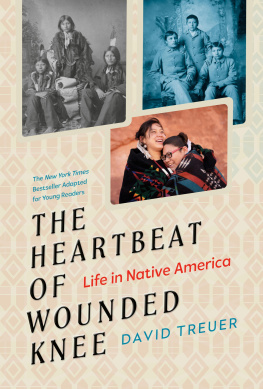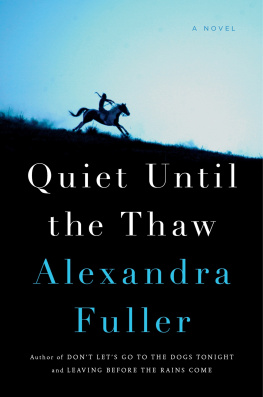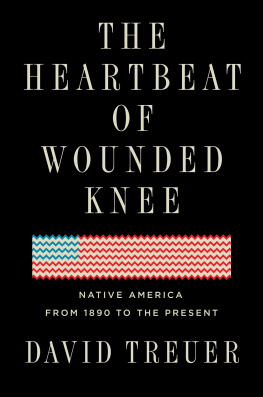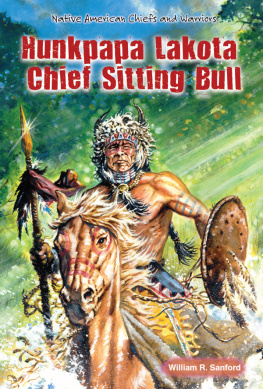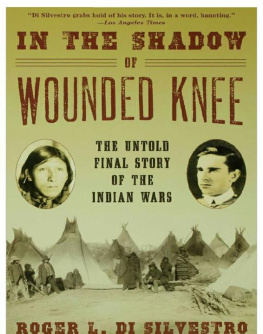Wounded Knee 1973: Still Bleeding
The American Indian Movement, the FBI, and Their Fight to Bury the Sins of the Past
Stew Magnuson

Contents
To Madeleine and Bahman Homayoonfar,
the best in-laws a new Dad could ever have
Wounded Knee 1973: Still Bleeding
Preludes
I t was an unseasonably warm winter day in 1890 on the Pine Ridge Indian Reservation in South Dakota when shells began to rain on the weary and half-starved band of Miniconjou Lakotas in the valley below.
A Paiute prophet to the west had spread a message of salvation from all the miseries the white man had perpetrated on the Indians. All they had to do was chant and dance, and the world would be reborn. The Ghost Dance religion swept over the prairie and spooked the white settlers, who believed their neighbors were engaged in a war dance. The United States cavalry had orders to intercept and disarm Chief Big Foots people, who had broken away from their reservation to the north to join their Oglala Lakota cousins in the dance at the Pine Ridge Reservation. After finding the band near Wounded Knee Creek, the Bluecoats attempted to confiscate the Indians guns. The Lakotas didnt like that. A gun was firedperhaps by accidentand then the slaughter began.
The Indian warriors fought in vain as shells and shrapnel from the Hotchkissa sort of half-cannon, halfmachine guntore into their canvas tents. The Bluecoats emptied their repeating rifles at anything that moved, sometimes killing one of their own by accident. Within minutes the engagement was decided, for no one could have withstood the withering fire for long. But the officer in charge failed to call for a cease-fire, so the massacre continued. Terrified women and children fled into the maze of gullies that led to Wounded Knee Creek as men and boys tried to help them escape. Bodies would later be found several miles from the camp.
When the bloodbath finally ended on that day, December 29, 1890, the Indian wounded were carted off and the dead left behind. They were eventually buried in a mass grave on a hilltop where the Hotchkiss had been mounted. The Lakotas called it a massacre. The army called it a battle and awarded Medals of Honor to twenty of its soldiers. The episode at Wounded Knee earned an infamy and symbolized the end of Native American resistance to the advancing American empire.
*
Eighty-two years and seventy days later, on the night of February 27, 1973, the resistance began again. A convoy of beat-up cars carrying dozens of angry young men sped into the same valley at Wounded Knee. A thin ribbon of blacktop now traversed the spot on the Pine Ridge Reservation where the ill-fated Lakotas had camped. A small trading post, a few residences, and a museum containing Indian artwork and artifacts stood beside the road. Next to the mass grave, a white chapel with a steeple overlooked the village close by.
The confused residents, most of them elderly whites or mixed-blood Indians, and one twelve-year-old girl, looked out their windows to see what was causing the commotion. When the men began shooting out the streetlights, they knew there was trouble. Members of the American Indian Movement (AIM) and local Lakotas had come to occupy Wounded Knee, to make a symbolic stand against injustice. They would hold out against the U.S. government for seventy-one days.
The angry Native American activists had occupied this symbolic sitewhere Chief Big Foot and members of his band had been slaughtered in 1890to protest the nontraditional administration of Oglala Sioux Tribal Chairman Dick Wilson. But the occupation lasted more than two months and turned into something much bigger than a factional squabble on the reservation. The violence involved in the protest prompted attention to the wide range of injustices perpetrated on Native Americans. It produced headlines around the world, attracted scores of activists, and made celebrities of Dennis Banks and Russell Means, AIM leaders. By the time the occupiers left, the village had been destroyed. Two were dead, one went missing, and a U.S. marshal was left paralyzed. The sensational trial of Means and Banks on charges stemming from the incident lasted almost six months longer than the occupation itself. A dirty war between AIM, the FBI, and Oglalas loyal to Chairman Wilson continued for the remainder of the decade. Dozens died under mysterious circumstances in the years following the occupation, including one of Wilsons greatest rivals, Pedro Bissonette, who was killed in a shootout with police. Two FBI agents, Ron Williams and Jack Coler, were slaughtered in cold blood. Anna Mae Aquash, the highest-ranking woman among the protesters, was shot in the back of the head by one of her own.
April 27, 2012
A lmost forty years after the 1973 occupation at Wounded Knee, the Center for Western Studies at Augustana College in Sioux Falls, South Dakota, hosted its forty-fourth annual Dakota Conference. Following its usual pattern, the gathering at the private, Lutheran-run school was devoted to the history, culture, and literature of the upper Great Plains. It was a forum where professors and graduate students came to present the results of their latest research in half-hour sessions, where poets and novelists read passages from Western-themed books that sold hundreds and sometimes a few thousand copies.
But this year the conference would offer something different. The organizers had settled on a controversial theme: Wounded Knee: Forty Years Later. It wasnt quite forty years since the American Indian Movement and its local allies had occupied the village on the Pine Ridge Reservation and sparked the first armed insurrection in the United States since the Civil War. But the takeover had begun in February 1973, and the conference was always held in April, so it was decided to mark the event in 2012.
Gusts swayed the trees outside the Center and augured a spring thundershower that would arrive that evening, just as Russell Means, gaunt from a recent bout with cancer of the esophagus, took the pulpit in the nearby Chapel of Reconciliation to deliver a speech titled The Wounded Knee Occupation: Before, During, and After. The irony of the chapels name should have been obvious for those conference participants who that afternoon had experienced sessions filled with angry words, insults, and murder accusations, where the words lies and liar had been heard a dozen times.
The conference that normally looked at history through an academic lens turned out to be historic itself. For this was the first time in memory that so many figures from the tumultuous 1973 occupation had gathered under the same roof. AIM co-founder Clyde Bellecourt had come from St. Paul, Minnesota, to join the discussions. Dennis Banks, another senior AIM leader, though not scheduled to participate, at the last minute had driven to Sioux Falls to defend his actions at the occupation. Joseph Trimbach, the FBI agent in charge during the first few weeks of the occupation, and his son John, both vehement AIM critics, led a panel discussionRevisiting Key Questions Concerning the 1973 Takeover and Occupation of Wounded Knee. With the Trimbachs were Cheryl Buswell, the widow of Perry Ray Robinson, a black civil rights activist who had gone to Wounded Knee and disappeared there under mysterious circumstances. On a video feed was Denise Maloney, the daughter of Anna Mae Pictou-Aquash, a Canadian Mikmaq Indian who had married in Wounded Knee and nearly three years after the occupation was executed by two rank-and-file AIM members. Also present was Adrienne Fritze, who was twelve years old when dozens of men and women invaded the little hamlet and took her and her family hostage. Fritze, now fifty-one, had come to the conference in a spirit of reconciliation. All she wanted was an apology from those who had traumatized her and her family. She would not get it.


